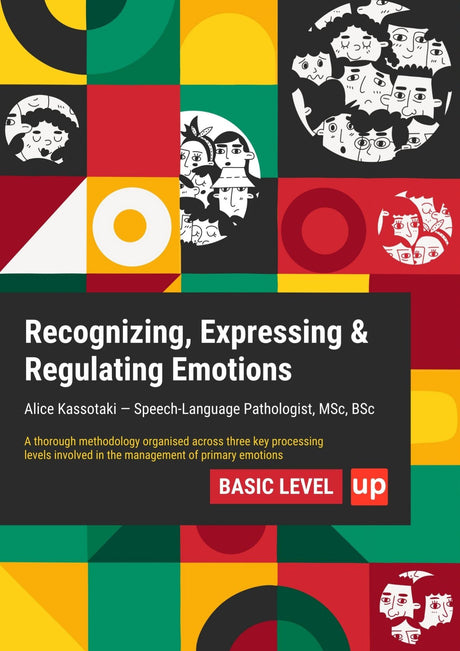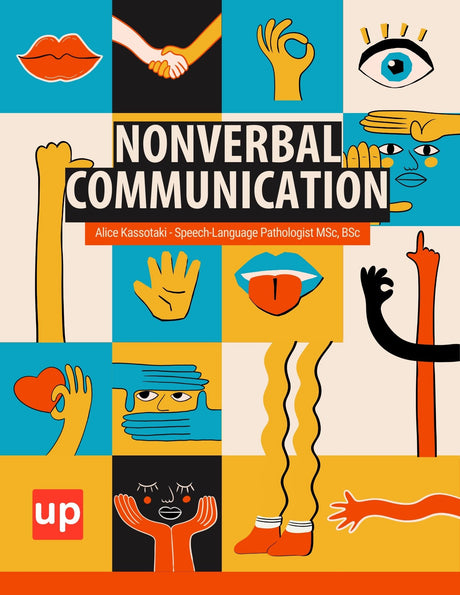Fine motor skills are the small muscle movements we use in our hands and wrists to perform everyday tasks like writing, buttoning, and using scissors. These skills are crucial for children’s overall development, from early learning to gaining independence in daily activities. In this article, we’ll explore what fine motor skills entail, their importance, and various activities to enhance them in children.
Key Takeaways
- Fine motor skills, essential for precise movements, are critical for children’s overall development, influencing tasks like writing and personal care.
- The progression of fine motor skills occurs in stages from infancy to age eight, each milestone building towards more complex tasks and academic success.
- Engaging in simple, enjoyable activities at home, such as art and crafts, can significantly enhance fine motor skills, fostering independence and confidence in children.
Understanding Fine Motor Skills

Fine motor skills involve precise movements that engage small muscles. This is especially relevant for the hands and wrists. These skills are central to many everyday tasks, from writing and drawing to using a keyboard and scissors. How fine motor skills are developed is crucial for effective functioning. Gross motor skills involve larger muscle groups for activities such as running and jumping. In contrast, fine motor movement skills focus on small, controlled movements.
The development of fine motor skills is a complex process that involves coordination between the brain and muscles. This intricate dance of perceptual-motor skills integrates both fine and gross motor skills, highlighting the interconnectedness of our developing motor skills.
As children grow, their ability to perform these precise movements improves, enabling them to achieve greater manual dexterity and proficiency in various tasks.
The Importance of Fine Motor Development

Fine motor skills are not just about dexterity; they play a crucial role in a child’s overall development. These skills are foundational for writing, allowing children to communicate and express their thoughts through written language. In early childhood education, fine motor skills are essential for engaging in fine arts and emerging writing experiences, fostering creativity and self-expression.
From birth to eight years old, children continually refine their fine motor abilities as fine motor skills develop, moving from whole arm movements to more refined finger strength. This development is significant not only for cognitive growth but also for practical daily tasks like dressing and feeding, promoting independence and responsibility. Additionally, engaging fine motor skills aids in cognitive development by establishing vital neural pathways in the brain.
Everyday tasks, such as dressing and undressing, offer practical opportunities for children to practice and enhance their fine motor skills through hands-on engagement. These activities not only build physical capabilities but also contribute to a child’s sense of accomplishment and self-confidence as they gain autonomy in their daily routines.
Stages of Fine Motor Skill Development
The journey of fine motor skill development begins in infancy. From 0 to 6 months, babies exhibit reflexive and voluntary grasping abilities. As they grow, their ability to control and release objects improves. By 6 to 12 months, babies start using a static pincer grasp to pick up small objects.
Between the ages of 1 to 2 years, children begin to self-feed with minimal help and can build small block towers. By 2 to 3 years, they start to snip with scissors and hold crayons correctly. These early milestones are crucial as they lay the foundation for more complex tasks.
From 3 to 4 years, children’s fine motor skills become more refined; they can build towers with nine blocks and imitate simple shapes. Between 4 to 5 years, they learn to cut along lines and copy simple shapes and letters. By 5 to 6 years, children can color within the lines and draw basic pictures, demonstrating improved control and precision.
As children enter school, their fine motor skills continue to develop. By 6 to 7 years, they can write letters and numbers correctly and demonstrate good pencil control. From 7 to 8 years, children maintain legibility in handwriting for entire stories, showcasing their advanced fine motor proficiency and its impact on academic achievements.
Activities to Enhance Fine Motor Skills

Enhancing fine motor skills doesn’t require elaborate setups. Simple, engaging activities can make a huge difference. From stacking blocks to completing puzzles, these activities are not only fun but also crucial for developing hand-eye coordination and fine motor skills.
The following subsections will delve into specific activities that target different aspects of fine motor development.
Whole Arm Movements
Whole arm movements are foundational for fine motor development. Tasks like using syringes and eye droppers can significantly improve hand strength and control, providing a solid base for more intricate tasks. Picking up items with tweezers or clothespins enhances grip strength and dexterity, crucial for more precise movements.
Strengthening whole arm movements is essential for developing gross motor skills, which in turn supports fine motor skills. Activities that involve the entire arm, such as finger painting or manipulating larger objects, help build the necessary muscle strength and coordination required for fine motor tasks.
Hand and Finger Strengthening
Developing hand and finger muscles is essential for effective fine motor skills. Occupational therapy often includes activities like sculpting with playdough and stringing beads to improve hand strength and agility. These activities are not only engaging but also crucial for building the muscle strength needed for tasks like writing and drawing.
Focusing on small muscle movements of the hands and fingers enhances children’s manual dexterity and overall motor proficiency. Strengthening these muscles is fundamental for tasks that require fine motor skills, such as grasping objects and making precise movements.
Pincer Grip Practice
The pincer grip, involving the thumb and index finger, is essential for tasks like writing. Developing a strong and controlled pincer grip relies on overall hand strength and coordination of the thumb, index, and middle fingers. Activities like stringing Cheerios or using play dough to make shapes enhance this crucial skill.
Practicing the pincer grip through fun activities, such as picking up small blocks or rolling small balls of play dough, helps refine the coordination necessary for fine motor proficiency. These activities not only strengthen the muscles but also improve the precision required for tasks like tying shoelaces and writing.
Role of Occupational Therapy
Occupational therapy plays a crucial role in improving fine motor skills in children who face difficulties. Occupational therapists use targeted interventions to enhance hand strength, dexterity, and coordination, helping children overcome challenges and achieve greater independence in daily tasks.
Impact of Fine Motor Skills on Academic Performance

Strong fine motor abilities are linked to academic success, particularly in writing, reading, and math. Activities that enhance fine motor skills also improve attention and spatial awareness, contributing to overall academic achievement. Developing these skills helps children gain the confidence and independence needed to succeed in school.
Fine motor skills facilitate tasks such as writing and drawing, which are essential for academic performance. Children with efficient fine motor skills important tend to perform better academically due to enhanced hand-eye coordination and cognitive functions, including memory and problem-solving.
Interventions to strengthen fine motor skills can lead to significant improvements in students’ academic performance.
Recognizing Fine Motor Skill Difficulties
Identifying fine motor skill difficulties early is crucial for timely intervention. Lack of strength in the small muscles of the hands can impede a child’s ability to manipulate objects effectively. Conditions like developmental coordination disorder and cerebral palsy can manifest as fine motor skill deficiencies. Occupational therapy assessments can help parents understand their child’s challenges and potential for improvement through targeted therapy.
Occupational therapists can pinpoint specific areas of struggle within fine motor skills and offer tailored interventions to improve functionality. Recognizing signs such as difficulty in completing tasks requiring small movements or messy work can indicate potential fine motor skill difficulties.
Encouraging Fine Motor Skills at Home

Parents can play a significant role in encouraging fine motor skills at home. Using materials that build strength in arms, hands, and fingers, along with engaging in mark-making activities, can greatly aid in developing these skills. Activities like drawing, painting, sculpture, and crafts provide excellent opportunities for children to express themselves while enhancing their fine motor abilities.
Providing consistent encouragement and diverse challenges in activities motivates children to practice and improve their child’s fine motor skills. Recognizing early signs of fine motor skill difficulties, such as slow completion of tasks requiring small movements and messy work, can help parents seek timely interventions.
Occupational therapy can be crucial in helping children overcome obstacles in fine motor tasks, improving their overall engagement and learning.
Long-term Benefits of Strong Fine Motor Skills
Developing fine motor skills has long-term benefits that extend beyond childhood. Children with strong fine motor skills are more likely to engage in self-care activities, contributing to their overall independence. These skills significantly enhance a child’s self-esteem by enabling them to perform tasks independently, reducing frustration and boosting confidence.
Summary
In summary, fine motor skills are essential for a child’s development, impacting everything from daily tasks to academic performance. Understanding these skills, recognizing the stages of their development, and engaging in targeted activities can significantly enhance a child’s proficiency and independence. Occupational therapy plays a vital role in supporting children with fine motor skill difficulties, ensuring they achieve their full potential.
Encouraging fine motor skills at home and recognizing early signs of difficulties can make a significant difference in a child’s life. The long-term benefits of strong fine motor skills, including enhanced self-esteem and independence, underscore the importance of nurturing these abilities from an early age.
Frequently Asked Questions
What are fine motor skills?
Fine motor skills are critical for tasks that require precision and control, involving the small muscles of the hands and wrists. These skills are vital for activities such as writing and drawing.
Why are fine motor skills important for children?
Fine motor skills are essential for children's cognitive development and their ability to perform daily tasks, fostering independence and a sense of responsibility. These skills play a significant role in their overall growth and readiness for future challenges.
How can I help my child develop fine motor skills at home?
Encouraging your child to engage in drawing, painting, and various crafts will effectively help develop their fine motor skills. Offering a range of activities that strengthen their hands and fingers, along with consistent support, is essential for their growth.
What role does occupational therapy play in fine motor skill development?
Occupational therapy plays a crucial role in fine motor skill development by providing targeted interventions that improve hand strength, dexterity, and coordination, thus enabling children to overcome challenges and achieve greater independence.
How do fine motor skills impact academic performance?
Fine motor skills directly influence academic performance by enabling essential tasks such as writing and drawing. Enhanced fine motor abilities are associated with better cognitive functions and overall academic success.
Original content from the Upbility writing team. Reproduction of this article, in whole or in part, without attribution to the publisher is prohibited.
Sources
-
American Occupational Therapy Association - Provides insights into how occupational therapy supports fine motor skill development in children.
-
Centers for Disease Control and Prevention (CDC) - Offers information on developmental milestones and the importance of fine motor skills in early childhood.
-
National Association for the Education of Young Children (NAEYC) - Discusses the role of fine motor skills in early childhood education and cognitive development.
-
Child Development Institute - Features articles on the stages of fine motor skill development and activities to enhance these skills in children.
-
The Journal of Occupational Therapy, Schools, & Early Intervention - Publishes research on the impact of occupational therapy on fine motor skills and academic performance.
-
The Dynamic Systems Theory of Motor Development - Explores the interconnectedness of fine and gross motor skills and their role in child development.
-
Harvard University’s Center on the Developing Child - Provides a comprehensive overview of how fine motor skills develop and their significance in cognitive development.









